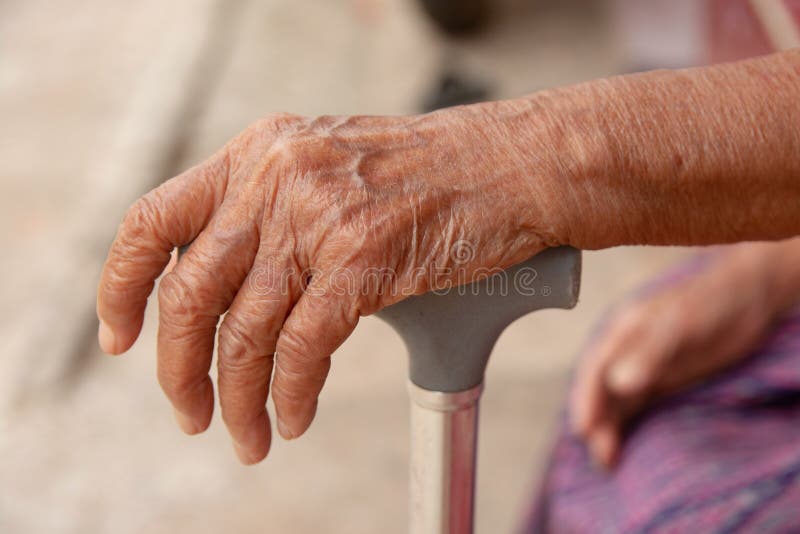
Many of us will have been in situations with older loved ones where a doctor says surgery is too risky given the patient’s advanced age. Why is surgery risky in the elderly, and is it based on chronological age or health?
Heightened Vulnerability Towards Anaesthesia

One concern for older patients is that the ageing brain is more vulnerable to anaesthesia. Here are two anaesthesia-related surgery risks that are more common in older people:
Postoperative delirium

Postoperative delirium is a temporary condition that affects older patients who have undergone surgery and received anesthesia. It is a complex condition that involves cognitive changes, including confusion, disorientation, and altered awareness of surroundings. The symptoms of postoperative delirium may range from mild to severe, and it may occur in the first few days after surgery or even a few weeks later.
The exact cause of postoperative delirium is not fully understood, but it is believed to be related to the interaction of multiple factors, including the effects of anesthesia, the surgery itself, and the patient’s underlying medical conditions. Age is also a significant risk factor for postoperative delirium, with older patients being more vulnerable to the condition than younger patients.
Postoperative delirium is a serious condition that can affect the patient’s recovery and increase the risk of complications, including longer hospital stays, increased morbidity and mortality, and higher healthcare costs. Therefore, it is essential to identify patients at high risk of postoperative delirium and implement preventative strategies.
Preventative strategies may include avoiding unnecessary surgery in frail patients, optimizing perioperative care, using shorter-acting anesthetics, providing adequate pain control, promoting sleep and mobility, and involving family and caregivers in the patient’s care.
In conclusion, postoperative delirium is a temporary but potentially serious condition that affects older patients who have undergone surgery and received anesthesia. Awareness and early identification of the condition, as well as implementing preventative strategies, can significantly improve patient outcomes and reduce healthcare costs.
Postoperative cognitive dysfunction (POCD)

Postoperative cognitive dysfunction (POCD) is a severe condition that affects older patients who have undergone surgery and received anesthesia. It refers to a decline in cognitive function, including memory, attention, and concentration, that persists beyond the initial postoperative period, usually for weeks to months.
The exact cause of POCD is not well understood, but it is believed to be related to the complex interaction of multiple factors, including the effects of anesthesia, the surgery itself, and the patient’s underlying medical conditions. Age is a significant risk factor for POCD, with older patients being more vulnerable to the condition than younger patients.
In addition to age, certain medical conditions may increase the risk of POCD, including heart disease (especially congestive heart failure), lung disease, Alzheimer’s disease, Parkinson’s disease, and a history of stroke. Other factors that may contribute to the development of POCD include the length of surgery, the type of anesthesia used, the patient’s level of education, and the presence of pre-existing cognitive impairment.
POCD is a significant concern as it can have a long-lasting impact on a patient’s quality of life, leading to difficulties with daily activities, reduced independence, and increased healthcare costs. Therefore, early identification and prevention of POCD are critical. Preventative strategies for POCD include optimizing perioperative care, providing adequate pain control, minimizing exposure to anesthesia, promoting sleep and mobility, and monitoring for signs of delirium or other cognitive impairment. In addition, patients with pre-existing cognitive impairment may benefit from a preoperative cognitive assessment and postoperative rehabilitation.
In conclusion, POCD is a severe condition that affects older patients who have undergone surgery and received anesthesia. It is a complex condition that involves multiple risk factors and requires a comprehensive preventative approach. Early identification and prevention of POCD are crucial to improving patient outcomes and reducing healthcare costs.
Higher Risk of Frailty

Frailty is a common state among older adults, and it refers to a condition of decreased physiological reserve and increased vulnerability to stressors. It is a complex, multifactorial process that involves the gradual decline of multiple organ systems, including the musculoskeletal, cardiovascular, and immune systems.
A frail person’s reduced ability to cope with acute and everyday stressors means that they are at higher risk of adverse health outcomes, such as falls, hospitalization, and mortality. Frailty can also affect a person’s ability to recover from surgery, with frail patients being more likely to experience postoperative complications, longer hospital stays, and worse outcomes.
The risk of frailty increases with age, but it is not an inevitable consequence of aging. Several factors can contribute to the development of frailty, including chronic medical conditions, malnutrition, social isolation, and cognitive impairment.
Therefore, the management of frailty requires a multidisciplinary approach, including medical and surgical interventions, rehabilitation, and social support. The identification of frail patients before surgery is crucial, as it can help healthcare professionals tailor interventions to minimize the risk of complications and improve outcomes.
Preoperative interventions for frail patients may include optimizing nutrition, managing chronic medical conditions, promoting physical activity, and addressing social and psychological factors that may contribute to frailty. In addition, a comprehensive geriatric assessment can help identify and address the specific needs of frail patients before and after surgery.
In conclusion, frailty is a state of decreased physiological reserve and increased vulnerability to stressors that affects many older adults. Frail patients are at higher risk of adverse health outcomes, including postoperative complications and longer hospital stays. Therefore, a multidisciplinary approach is required to manage frailty and optimize outcomes for these patients.
How to Test

A simple hand-squeeze test at the doctor’s office is one way to tell whether a patient might be too frail for surgery. Using a device called a hand-grip dynamometer – typically used to test hand and forearm strength in athletes – in conjunction with a patient’s body mass index, clinicians can quickly and precisely measure frailty.
While a hand-squeeze test can be a useful initial screening tool, assessing frailty requires a more comprehensive evaluation. The assessment should take into account multiple domains, including physical function, cognitive function, nutritional status, and psychological factors.
Some of the validated tools used to assess frailty include the Frailty Index, the Clinical Frailty Scale, and the Fried Frailty Phenotype. These tools involve a comprehensive evaluation of multiple factors, including mobility, strength, balance, cognitive function, and chronic medical conditions.
The evaluation may also include laboratory tests to assess nutritional status and inflammation markers, such as C-reactive protein (CRP). The identification of a reversible cause of frailty, such as malnutrition or anemia, may help improve the patient’s overall health status and reduce the risk of adverse surgical outcomes.
In addition to the preoperative assessment, the management of frailty requires a multidisciplinary approach, involving medical and surgical interventions, rehabilitation, and social support. The involvement of a geriatrician, physical therapist, and occupational therapist may be necessary to optimize the patient’s functional status and minimize the risk of complications.
In conclusion, while a hand-squeeze test can be a useful initial screening tool for frailty, a comprehensive assessment that takes into account multiple domains is necessary to evaluate whether a patient is too frail for surgery. Identifying and addressing reversible causes of frailty and involving a multidisciplinary team can help optimize outcomes for these patients.
Statistics PubMed Central (2018)
The study identified a total of 161 patients, including 58 who underwent elective surgery and 103 who underwent emergency surgery. The mean age of the patients was 92.8 years, ranging from 90 to 106 years old.
The 90-day mortality rates were significantly higher for patients who underwent emergency procedures (19.4%) compared to those who had elective procedures (5.2%) (p=0.013). The median survival was also significantly shorter for patients who underwent emergency procedures (19 months) compared to those who had elective procedures (29 months) (p=0.001).
Patients who underwent emergency and primary gastrointestinal surgeries had a significant increase in mortality. The 90-day mortality rate was particularly high (53.8%) for patients who underwent emergency major colonic or upper gastrointestinal surgery.
These findings suggest that emergency surgery and primary gastrointestinal operations are associated with a higher risk of mortality in very elderly patients. The study highlights the need for careful consideration of the risks and benefits of surgery in this patient population and the importance of appropriate patient selection and preparation for surgical procedures.
A Pillar of Strength in Golden Years: 10 Paths on How Regular Screenings Uphold Your Health
In the evocative voyage of life, the golden years emerge as a time to relish the fruits of decades of labor, to bask in the
Unlock the Secret to Sweet Dreams: 10 Ways of Enhancing Sleep Quality as You Age
Share on facebook Facebook Share on twitter Twitter Share on linkedin LinkedIn Share on pinterest Pinterest Share on telegram Telegram Share on whatsapp WhatsApp Share
Building Bridges, Not Walls: 10 Methods of Mastering the Art of Cultivating Social Connections in the Golden Years
Share on facebook Facebook Share on twitter Twitter Share on linkedin LinkedIn Share on telegram Telegram Share on whatsapp WhatsApp Share on email Email Share
Navigating the Golden Years: 10 Ways to Achieve Emotional Wellness and Conquering Loneliness
Share on facebook Facebook Share on twitter Twitter Share on linkedin LinkedIn Share on pinterest Pinterest Share on telegram Telegram Share on whatsapp WhatsApp Share
Stay Brainy in Your Golden Years: 10 Fun Activities to Keep Your Mind Sharp and Engaged!
Hello, brain buffs! Aging might be inevitable, but letting our minds turn to mush? No way, José! Time to boot up those brain cells and
10 Effective Exercise Routines for Older Adults: Low-Impact Fitness Options
Of course, maintaining physical health is crucial at any age, but especially so as we grow older. Here are ten gentle, effective, and friendly exercise